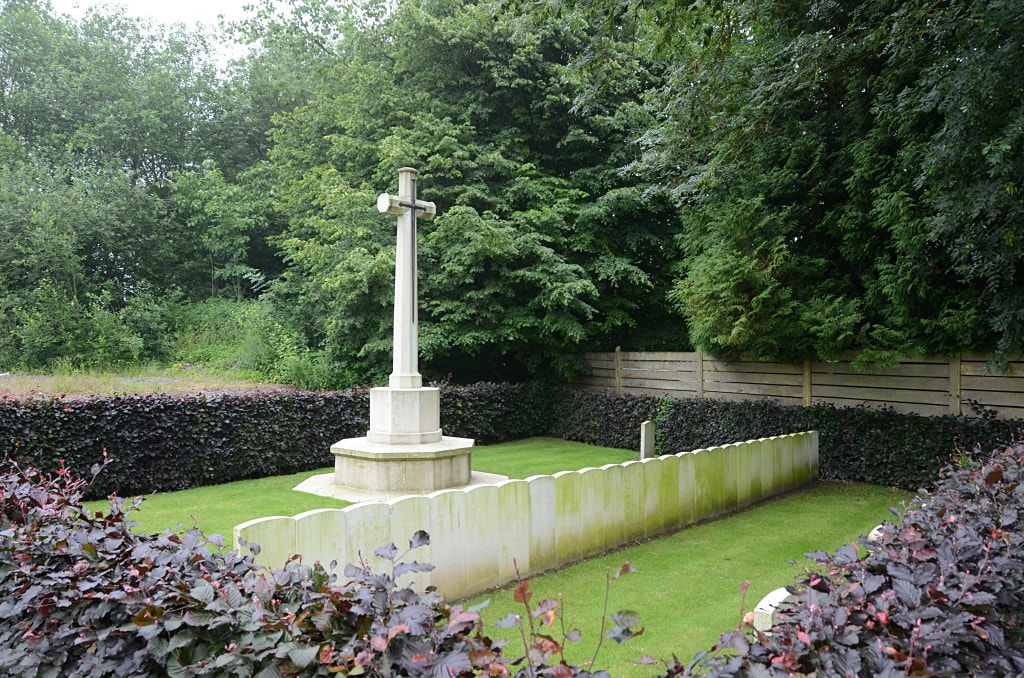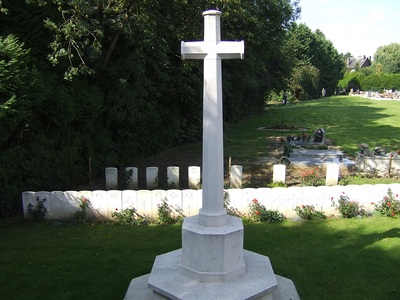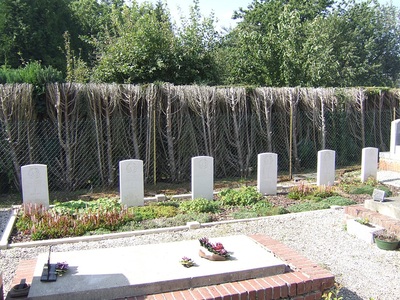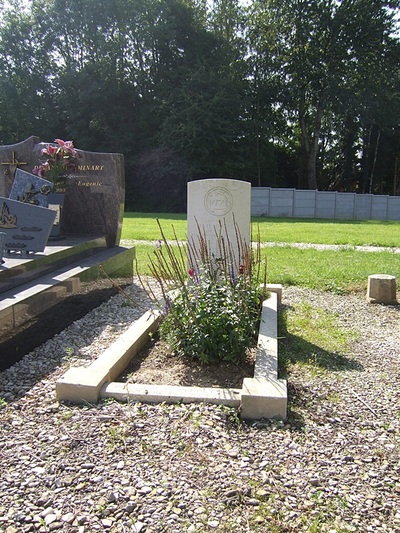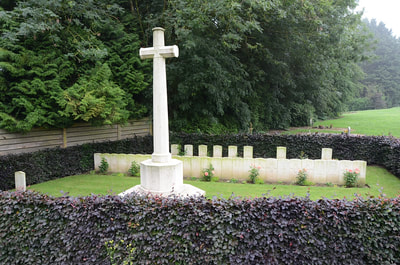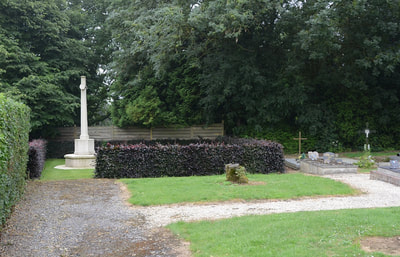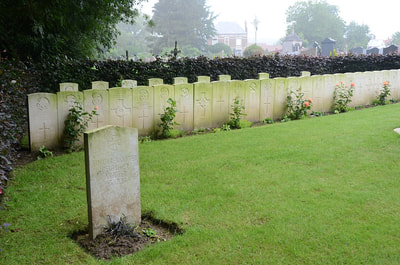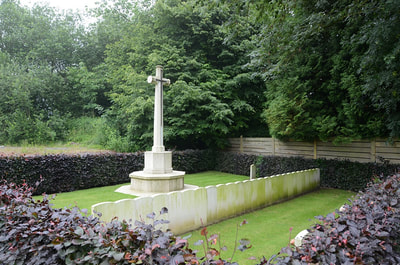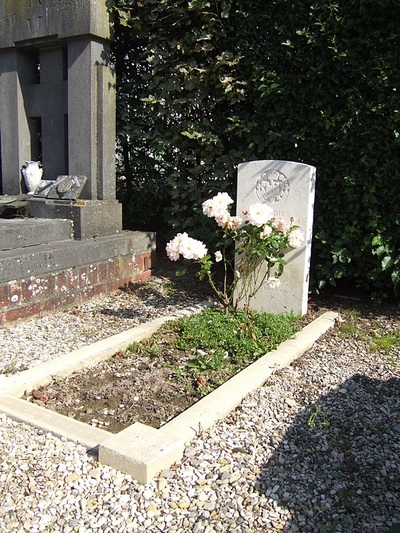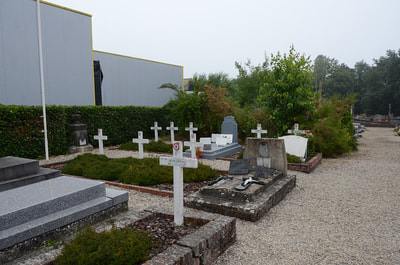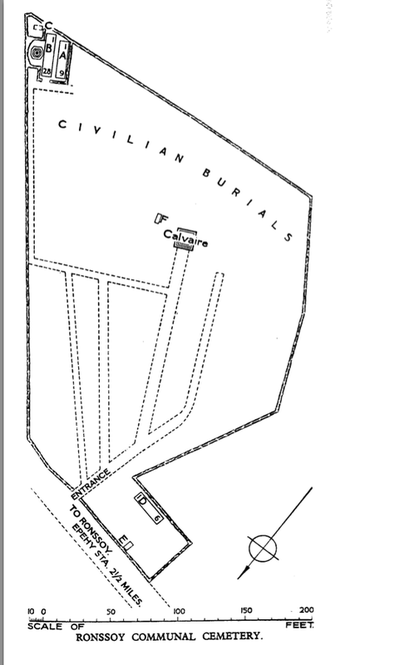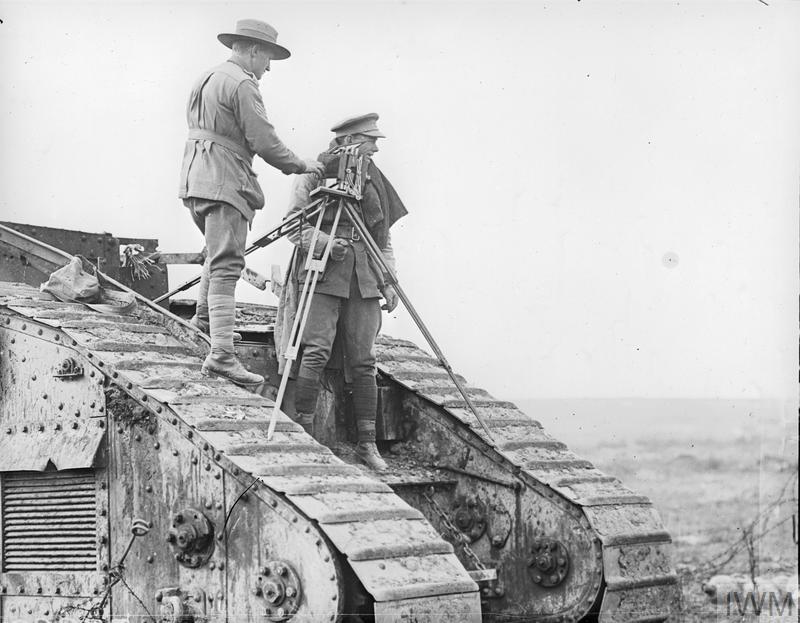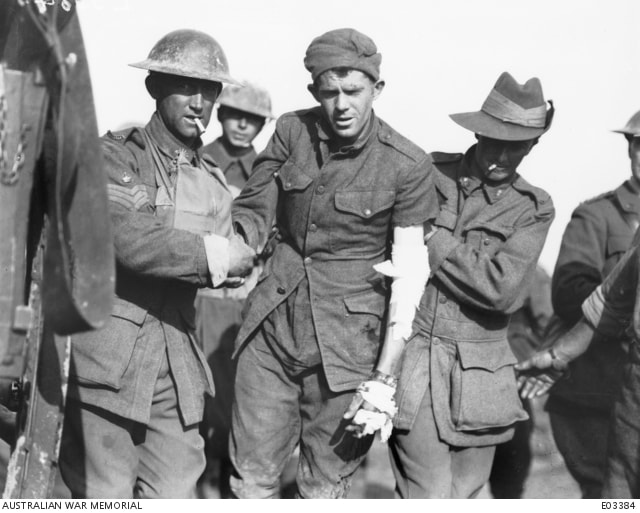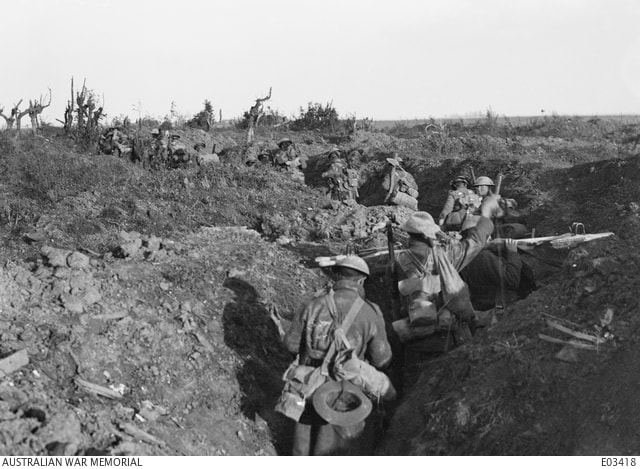RONSSOY COMMUNAL CEMETERY
Somme
France
GPS Coordinates - Latitude: 49.98318, Longitude: 3.16176
Location Information
Ronssoy is a village situated in the far north-eastern corner of the Department of the Somme, 20 kilometres north-north-west of St Quentin.
The Communal Cemetery is not visible from the road but will be found just opposite the village Marie, behind a row of buildings. The Commonwealth War Graves plot is located at the lower left hand corner of the civil cemetery and is surrounded by beech hedging.
Historical Information
Ronssoy was captured by the 7th Royal West Kent on the 18th September, 1918. The Communal Cemetery had been used by German troops, and eight United Kingdom soldiers were buried by them. The rest were buried by British troops in September and October, 1918.
There are now over 40, 1914-18 war casualties commemorated in this site. Of these, a small number are unidentified.
The larger British plot, covers an area of 174 square metres.
Casualty Details: UK 38, Australia 7, Total Burials: 45.
Ronssoy is a village situated in the far north-eastern corner of the Department of the Somme, 20 kilometres north-north-west of St Quentin.
The Communal Cemetery is not visible from the road but will be found just opposite the village Marie, behind a row of buildings. The Commonwealth War Graves plot is located at the lower left hand corner of the civil cemetery and is surrounded by beech hedging.
Historical Information
Ronssoy was captured by the 7th Royal West Kent on the 18th September, 1918. The Communal Cemetery had been used by German troops, and eight United Kingdom soldiers were buried by them. The rest were buried by British troops in September and October, 1918.
There are now over 40, 1914-18 war casualties commemorated in this site. Of these, a small number are unidentified.
The larger British plot, covers an area of 174 square metres.
Casualty Details: UK 38, Australia 7, Total Burials: 45.
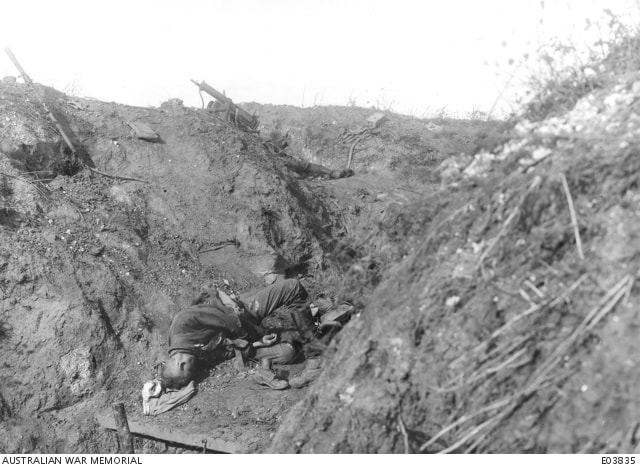
5th October 1918 - A scene in the Hindenburg Outpost Line on the Knoll, near Ronssoy. At this stage of the fighting most of the enemy machine gunners stayed at their posts to the last, and in many cases refused to surrender. Note the machine gun at the top of the revetment and the dead German at the bottom.
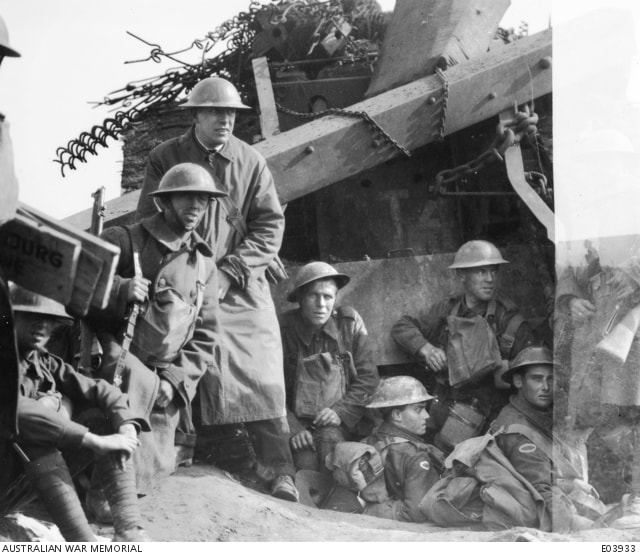
30th September 1918 - Members of the 3rd Division at the rear of a British tank to the rear of Duncans Post, near Ronssoy, watching the progress of their comrades in the attack on the Hindenburg Line. The horizontal plate behind the crouching figures is the fuel tank's armoured shield. The large square section beam hanging across the rear of the tank is the unditching beam. The slightly angled beam which ascends towards the beam is the unditching rail. The thick section chain by which the beam was secured to the tank track is seen on the right hand side. On top of the tank may be seen rolls of dannert barbed wire and pigstail barbed wire pickets. The tank identification number J4[?] may just be made out underneath the unditching beam. Identified: an American soldier (second from the left) and 3632 Lance Corporal P. M. James (seated, bottom right).

